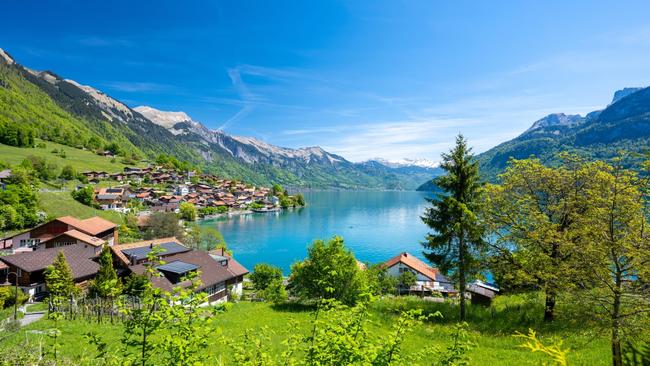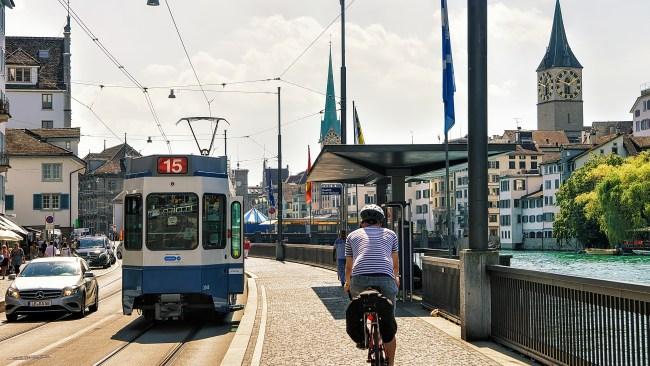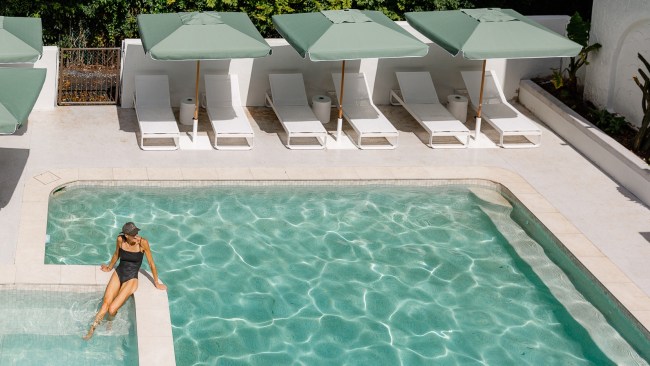I spent $56 on a pizza in Switzerland, here's how not to ruin your budget.
La vie in Switzerland can be très expensive, but there are ways to save money.

Lifestyle
Don't miss out on the headlines from Lifestyle. Followed categories will be added to My News.
What they say about one of Europe’s wealthiest countries is true. It is expensive. The average Swiss adult has a mean wealth of one million dollars, and this has a lot to do with the fact that the minimum wage per hour is CHF 23 ($41AUD). Switzerland is a paradise for people with money, and at times an anxiety-inducing hotspot for young students. Take it from me, studying in Switzerland at the ripe age of 21 will do wonders for your wallet.
I studied in Lausanne, a Swiss-French city not too far from Geneva. When my parents came to visit me six months into exchange, I was asked what my restaurant recommendations were. I didn’t have a single one. We walked the cobblestone streets of the city’s centre and happened upon an Italian pizzeria. I ordered the Vesuvio, which was going for a whopping CHF 31 (AUD$56). The average-sized pizza, topped with fior di latte, mushrooms, cherry tomatoes and Italian sausage, came to roughly $7 a slice.

So how do you save money travelling in Switzerland? Here are my tried and tested, student-approved tactics.
1. Visit in the off-season
Despite its winter wonderland notoriety, Switzerland’s off-season runs from October to March. Colder weather, snow and the occasional (and irrational) fear of frostbite deters tourists. But it’s also when you can score more affordable flights and experiences. Plus who doesn’t mind a little winter layering?
2. Travel between 7pm and 5am
Depending on the length of your stay, the option of paying CHF 99 (AUD$170) for a Night Travelcard can save you money in the long run. Offered to those under 25, night owls get unlimited travel between 7pm and 5am. Which means a trip to Club Zukunft in Zurich is well within your budget.

3. Grocery shop across the border
In Lausanne it wasn’t uncommon for students (and the Swiss) to catch the ferry to Évian-les-Bains; a French city on the opposite side of Lake Geneva, to stock up on pantry essentials. They’d take a bundle of reusable bags, shop at a food market, indulge in a crêpe or two, then make their way back to Switzerland. Consider it their version of a Costco run.
4. Rent a bike
Bike rentals operate in most major Swiss cities. Zurich offers free bike hires through Züri rollt. Velospot lets you hire a bike for CHF 2.90 (AUD$5) for 30 minutes and CHF 3.80 (AUD$7) for 15 minutes on an e-bike. RentABike offers one to three day hires and long term rentals, with student discounts. Publibike is a sustainable bike sharing app that works on a subscription basis. The choice is yours.

5. Don’t ski in Switzerland
Unless you’re travelling to Switzerland with the sole intention of skiing, might I offer you alternative options? A day pass in Zermatt can hike up to around CHF 95 (AUD$170). A day pass in Saint Gervais Mont-Blanc in France is around €55 (AUD$92) and takes just an hour to drive to from Geneva.
6. Get a city pass
If you’re staying in accommodation that pays the overnight tourist tax, some cities offer transport cards where you can use its public transport system for free for up to 15 days. In Lausanne, these zones stretch out as far as Bussigny, EPFL, Epesses and Cheseaux sur Lausanne. Bonus: discounted entry into places like Lausanne Cathedral, the Olympic Museum and Palais de Rumine. That’s transport and sightseeing sorted!
More Coverage
Originally published as I spent $56 on a pizza in Switzerland, here's how not to ruin your budget.





